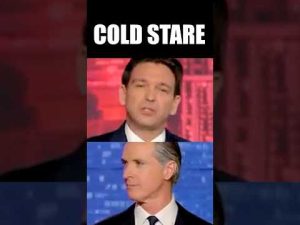The issue of illegal immigration is like an unwelcome houseguest who keeps moving from room to room, making themselves at home while the actual residents just shake their heads in disbelief. It appears that immigration policies, especially those put in place during the previous administration, are now under the spotlight as the new border czar, Tom Homan, prepares to kick off a new era of immigration enforcement. On day one, he plans to unleash the enforcement personnel of Immigration and Customs Enforcement (ICE) to make a real impact in tackling the challenges of illegal immigration.
One angle of this conversation revolves around the conditions in sanctuary cities. These cities may think they are doing a service by offering a safe haven to individuals living here illegally, but some argue they are merely shielding those who commit serious crimes from being held accountable. The mayoral policies in place have created an environment where law enforcement may hesitate to act, leaving serious public safety threats walking free. Critics of these sanctuary policies stress that local authorities must step up and work alongside federal law enforcement to ensure that illegal immigrants who are serious offenders are dealt with appropriately.
The discussion brings up the thorny issue of mass deportations. While it may be a controversial topic, many believe that when people break the law—whether it’s entering the country illegally or committing a violent crime—they should face consequences. Yet, there’s a deeper nuance to this issue because the reality is that our economy heavily relies on the contributions of approximately 12 million undocumented workers. This creates a dichotomy where many people see the need for reform, yet have concerns about simply pushing people out without a proper plan in place.
Homan’s proposed immigration strategy not only emphasizes public safety but also calls for a reassessment of the current legal immigration system. He argues for an adjustment that includes high-skilled and low-skilled visa programs to make sure that those who come into the country legally have the chance to contribute to society without fear of deportation. The idea is to create clear and functional pathways for legal entry, rather than leaving things to chance and allowing people to enter illegally, only to face massive deportation efforts later on.
As the new administration gears up for these changes, achieving a balanced approach will undoubtedly require significant groundwork. This means talking to state and local officials to ensure a cooperative enforcement effort and possibly revamping detention facilities to accommodate the deportation process. While some critics may argue this strategy is too aggressive, proponents claim that it’s a necessary step to restore order and security. In the end, it seems that restoring the borders and ensuring only lawful residents are allowed to stay in the country will require an earnest effort from all sides, and might just involve a touch of humor to lighten the serious conversation—because, let’s face it, this immigration debate has been rife with drama worthy of a Hollywood screenplay!







